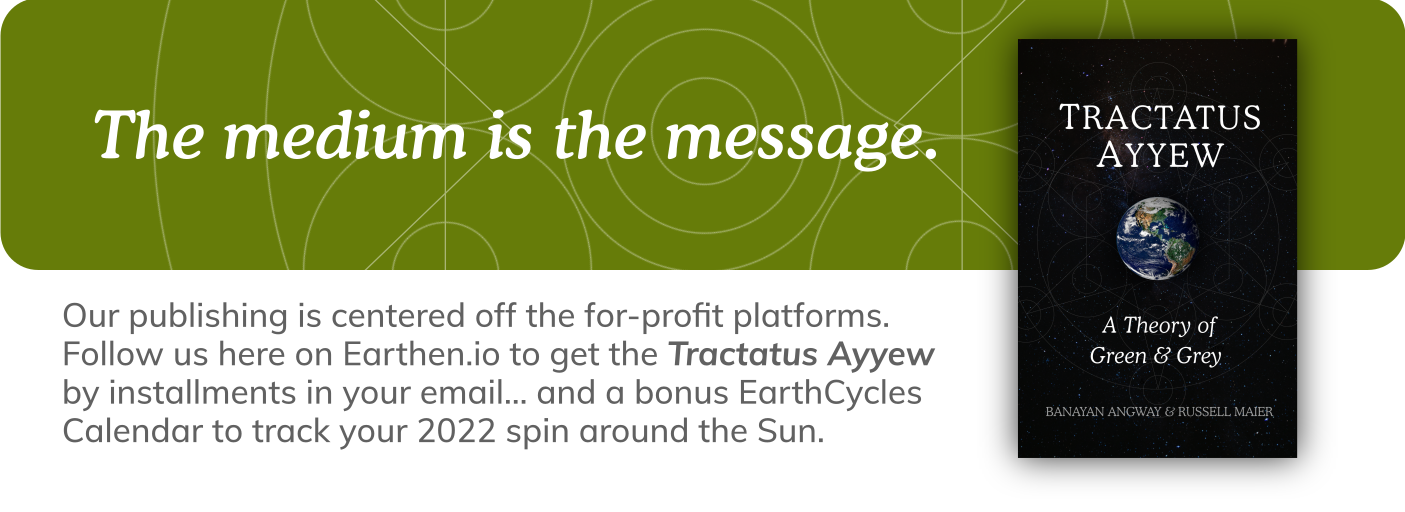The Earth's Pattern of Process
Rather than be mired in self-judgment at our play with carbon, we can be dazzled by the Earth’s.

OVER THE LAST FOUR BILLION YEARS, the singular combination of our planet's orbit, spin, chemistry and magnetosphere have played out. As this unique configuration of matter and energy has unfolded, a once barren rock has transformed into the thriving biosphere that is our common home today. Of all that we know of other planets in our solar system and galaxy, it is an extraordinary and epic story. However, what makes the story even more remarkable is that the tellers of the tale are thoroughly part of it.
Our telling of the Earth's tale is only possible through a vast and unique confluence of matter and energy; the spiral of carbon into ever more concentrated and complex configurations, the dispersion of the sun's energy into ever more diverse organisms and ecosystems; and the inexorable cultivation of consciousness in a myriad of forms.
Only now that this story can be fully told can we truly understand the compacted carbon deposits that propel our modern economy and have enabled this story to be told in full.
Now, from this vast vantage we see past our short-sightedness.
Rather than be mired in despair at our modern story of ecological depletion, we can be awed by the Earth’s ancient story of ecological enrichment.
The way our planet— as a uniquely configured cosmological system— has managed its matter and energy has led to the steady greening of its surface; the cultivation of ever greater diversity, vibrancy and abundance of life1. And finally, through the resulting emergence of consciousness, we have been propelled to the telling and pondering of the story itself.
So, where do we go from here?
First, let us hold fast to our vantage and the vast view it affords.
From here we can observe another pivotal planetary phenomenon. Aside from meteor strikes and massive volcanoes, it is a phenomenon unseen on the planet for hundreds of millions of years.
Because of the doings of modern humanity, never before has the Earth’s atmospheric carbon count jumped upwards so quickly2. Never before have there been processes that so rapidly added more loose carbon into the biosphere than they were able to subtract into concentration. Aside from several meteor strikes and massive volcanoes, never before have processes that destabilize, degrade and deplete so abruptly outweighed those that enrich.
The ensuing ecological disturbances directly challenge our last century of carbon play.
Much like a child building with toy blocks for the first time; an understanding of the game does not come all at once. After the thrill of of assembling a grand castle, when the pieces inevitably tumble down, when the results aren’t as intended, the upset youngster invariably blames themselves and the blocks.
Of course, neither are to blame! Only through that first fall can the child grasp the way of play.
There is no other way.
Likewise, our disruption of ecological cycles is not a consequence of our ‘nature’ any more than it is the nature of carbon.3 Rather, it is the way of our play: the fundamental pattern by which our processes have managed their energy and their matter.
As we saw in plastic’s stellar story, our modern processes have increasingly intended patterns of energy and matter that have dispersed carbon, concentrated energy, reduced biodiversity and stifled ecological awareness. In sharp contrast, the Earth's processes have inexorably tended towards just the opposite: the concentration of carbon, the dispersal of energy, the increase of diversity and the cultivation of consciousness. Whereas our modern pattern of process has degraded ecosystems, the Earth's has systematically enriched them— making them ever more diverse, vibrant and abundant.4
Like a despairing and determined child on a second-go at block-building, we’re trying harder than ever before. With a shame at our failings, we have our heads down, striving valiantly to make our processes less polluting, less damaging, less grey. However, with the underlying pattern of our processes unchanged, even if they are less harmful—harmful they remain. Over time, any improvements in efficiency of our net-harmful processes have been inevitably eclipsed by increases in output. In this way, no matter how hard we have striven, our polluting grey ways continues unabated.5
Banayan and I have come to see that it is time to raise our heads from the toil.
And the judgment.
Again, rather than despair, we can be awed.
Our once-in-a-million-years phenomenon of additive carbon usage is in fact a tremendous opportunity.
For the first time, with our usage of carbon as a foil, the difference between our modern human-ways and the ways of Earth’s can be observed with unprecedented clarity. In the stark contrast of patterns, we can begin to clearly discern the pattern that has underlaid the Earth’s transformation of a barren planet into a thriving biosphere: the principles in which the Earth’s biomes, ecosystems and organisms have each contributed towards the enrichment of all.
However most significant of all, through a clarity that only comes from scrapping the depths of our despair, our modern gaze can now recognize those societies— ancient and ongoing— that have long found resonance with the Earth’s pattern.
Nations that, although long dismissed and disregard, have long ago mastered their ecological integration.
Nations that, rather than build castles for some, cultivated common homes for all.

NEXT: Chapter 5 | Another Knowing

PREVIOUS: Chapter 3 | Plastic's Stellar Story
WHAT IS THE TRACTATUS AYYEW?
A decade ago, Banayan Angway and Russell Maier; an Igorot wisdom keeper and a western philosopher, joined forces to protect the Chico River in the remote Northern Philippines from an inundation of plastic pollution. Ever since, they have continued to explore the pressing modern relevance of indigenous ecological wisdom. Guided by the Igorot Ayyew eco-ethos, they are publishing a systematic theory of green and grey in the form of a philosophical treatise. The Full Story of the Tractatus Ayyew

Footnotes
1 Going forward we will frequently refer to the Earth as a proper noun implying agency (i.e. “the Earth managed its energy”). While it is more than possible to conceive the Earth as a sentient entity, a divine being, or the active creation of a divine being(s), such claims are far beyond the scope of this essay. Instead, we imply agency simply in as much as any self-contained system has its own unique patterns and “way of doing things” — as we speak of a clock “keeping time” or a leaf “transforming sunlight”.
2. “The present atmospheric content [of CO2] exceeds anything Earth has experienced in the last million years and possibly the last 20 million years” David Beerling, (2007), The Emerald Planet, Oxford University Press.
3. In the Matrix agent Smith describes humanity as a unique planetary virus. David Attenborough and others have described humanity as a unique “plague” upon the planet. Within this view of humanity, resides the assumption that ecological denigration is ‘human nature’. We observe this to be an extreme form of antropocentricism (i.e. humans are unique among all other earthen organisms species in that they destroy rather than enrich the biosphere). We believe that from an indigenous, historical and scientific perspective this assumption is flawed and its repudiation is the main thrust of the Tractatus.
4. Here and throughout the Tractatus, we refer to the cumulative four billion years of the Earth’s history. Over the full period of the Earth’s history, there have been tremendous swings in the abundance and diversity of life on the planet– times of extinction where for millions of years life was severely stifled. However, on the whole the net-biodiversity of the biosphere has steadily increased. We will fully examine this phenomenon and the pioneering biodiversity survey of paleontologist Joseph Sepkoski in Chapter nine.
5. Hope is often placed on increases in efficiency to decrease the cumulative negative impact of a technology (i.e. “more efficient coal powered steam engines will decrease London’s pollution”). However, the Jevon’s Paradox shows that over history, advances in technological efficiency have resulted in increased ecological impact. As efficiency increases, so too does the adoption and spread of the technology, inevitably leading to a net-increase in pollution despite the greater efficiency (or, as we argue: because of it).




